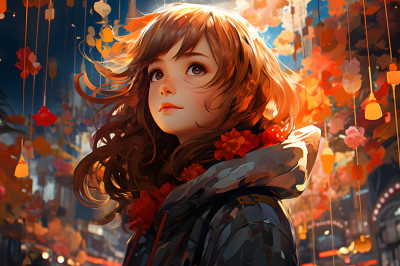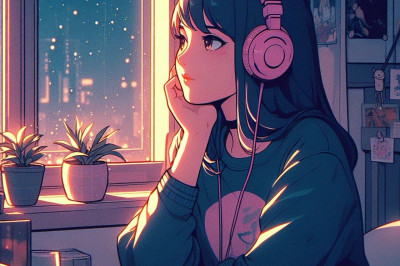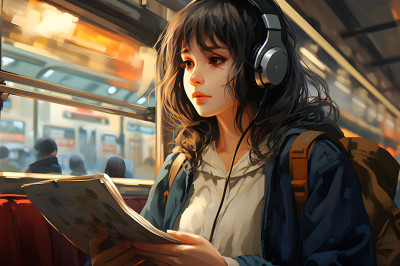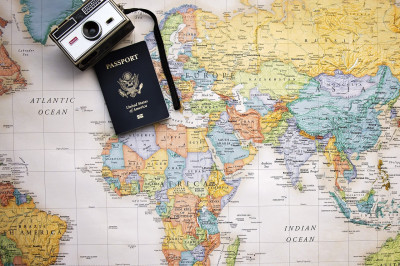Understanding the Big 3 Anime PhenomenonOrigins and Definition
The term "Big 3" refers to a trio of long-running anime series that have achieved massive popularity, both in Japan and internationally. These series are "One Piece," "Naruto," and "Bleach." They emerged in the late 1990s and early 2000s, a golden era for anime, and quickly became synonymous with the shonen genre, which targets young male audiences with a mix of action, adventure, and coming-of-age stories.
Common Traits of the Big 3
The Big 3 share several common characteristics that have contributed to their widespread appeal. Firstly, they boast extensive worlds filled with diverse characters, each with their own unique abilities and backstories. Secondly, they follow a serialized storytelling format, allowing for long, intricate plots and character development. Thirdly, they incorporate themes of friendship, perseverance, and self-improvement, resonating with a broad audience base.
Cultural Impact and Fandom Growth
The Big 3 have had a profound impact on global anime fandom. They have introduced countless viewers to anime, serving as gateway series that have sparked a deeper interest in Japanese animation and culture. The fandoms of these series are known for their dedication, often participating in fan art, fan fiction, and cosplay, and forming communities around the world.
Media Expansion and Merchandising
The success of the Big 3 has led to extensive media franchises encompassing not just the anime series themselves but also movies, video games, novels, and a wide array of merchandise. This expansion has played a significant role in the commercialization of anime, making it a lucrative global industry.
Influence on Subsequent Anime Series
The Big 3 have set benchmarks for success in the anime industry, influencing the production and marketing strategies of subsequent anime series. Newer anime often draw inspiration from the Big 3, whether in terms of character design, storytelling techniques, or thematic content, hoping to replicate their success.
The Role of International Streaming and Accessibility
The rise of international streaming platforms has been instrumental in the global reach of the Big These platforms have made it easier for fans around the world to access these series, often with professional subtitles or dubs, thus removing barriers to entry and contributing to the growth of the anime community.
The Big 3's Contribution to Anime's Mainstream Acceptance
The Big 3 have played a pivotal role in bringing anime into mainstream entertainment. Their popularity has helped to break down stereotypes and misconceptions about anime, paving the way for other series to be taken seriously by a wider audience and media outlets.
The Rise of Naruto: A Ninja's Influence on International AudiencesOrigins and Growth of Naruto
"Naruto," created by Masashi Kishimoto, began as a manga series in 1999 and quickly became a cornerstone of the Weekly Shonen Jump magazine. Its anime adaptation, which started airing in 2002, brought the story of the young ninja Naruto Uzumaki and his quest to become the Hokage to a broader audience. The series' intricate world-building, coupled with its blend of action, adventure, and emotional storytelling, resonated with viewers around the globe.
Character Development and Relatable Themes
Naruto's journey from an ostracized orphan to a respected ninja struck a chord with fans. The character development of Naruto and his peers, such as Sasuke Uchiha and Sakura Haruno, showcased themes of perseverance, friendship, and redemption. The series tackled complex issues like discrimination, loneliness, and the consequences of war, making it relatable to an international audience beyond its younger demographic.
Cultural Exchange Through Anime
As "Naruto" gained popularity, it became a significant cultural export for Japan. The series introduced many to Japanese customs, folklore, and the concept of ninjas. It sparked an interest in learning more about Japanese culture and even encouraged fans to learn the Japanese language to better understand the series in its original form.
Merchandising and Media Expansion
The success of "Naruto" led to a vast array of merchandise, from action figures and clothing to video games and novels, further cementing its place in pop culture. Spin-offs and movies expanded the universe, while the sequel series "Boruto: Naruto Next Generations" continues the legacy, keeping the franchise relevant in the global market.
Fandom and Community Building
"Naruto" has fostered a strong, dedicated fan community. Online forums, fan fiction, and fan art have flourished, allowing fans to engage with the series and each other. International anime conventions often feature "Naruto" cosplayers, panel discussions, and screenings, highlighting the series' ability to bring people together across different backgrounds.
Influence on Animation and Storytelling
The series has influenced the anime industry by setting a high standard for character arcs and long-form storytelling. Its success has shown that there is a demand for serialized, character-driven narratives in animation, paving the way for other anime to find international success.
Streaming Services and Accessibility
The advent of streaming services has played a crucial role in the accessibility and popularity of "Naruto." Platforms like Crunchyroll, Netflix, and Hulu have made it easier for international audiences to watch the series, contributing to its sustained popularity and the growth of anime viewership worldwide.
Legacy and Ongoing Impact
"Naruto" has left an indelible mark on the global anime fandom. Its themes of resilience and the importance of bonds continue to inspire new generations of fans. The series' impact is evident in the way it has shaped fan culture, influenced storytelling in animation, and contributed to the global understanding and appreciation of anime as a storytelling medium.
One Piece: Sailing into the Hearts of Fans WorldwideThe Creation of a Phenomenon
Eiichiro Oda's masterpiece, 'One Piece,' first appeared in the pages of Shueisha's 'Weekly Shonen Jump' in The story of Monkey D. Luffy and his quest to find the titular treasure has captivated audiences with its unique blend of adventure, humor, and heartfelt storytelling. Oda's rich world-building and the diverse cast of characters have allowed fans to immerse themselves in the pirates' quest, creating a dedicated global following.
The Characters We Love
The Straw Hat Pirates, a group of eccentric and lovable characters, each with their own tragic backstories and dreams, are at the core of 'One Piece's' appeal. Luffy's unwavering determination, Zoro's quest for strength, Nami's navigation towards freedom, and the rest of the crew's individual aspirations resonate with fans, offering a character for every viewer to relate to or admire.
Cultural Impact and Merchandise
'One Piece' has transcended the realm of manga and anime, becoming a cultural phenomenon. The series has inspired countless merchandise, from action figures and clothing to video games and theme park attractions. Its iconic imagery, such as the Jolly Roger of the Straw Hat Pirates, has become a symbol of the series' influence and is recognized by fans worldwide.
Global Reach Through Media and Distribution
The anime adaptation, which began airing in 1999, has been pivotal in spreading 'One Piece's' popularity across the globe. Through television broadcasts, streaming services, and film releases, 'One Piece' has reached audiences far beyond Japan's borders. Dubbed and subtitled versions have made the series accessible to a diverse international audience, contributing to its status as a global phenomenon.
Fandom Community and Shared Experiences
Online communities and fan events play a significant role in the series' international appeal. Forums, fan sites, and social media platforms have allowed enthusiasts to share theories, artwork, and discussions, fostering a sense of community among viewers. Annual events like conventions and 'One Piece' gatherings enable fans to celebrate the series together, strengthening the bond within the fandom.
Longevity and Ongoing Appeal
The longevity of 'One Piece' is a testament to its enduring popularity. With over two decades of content and a narrative that continues to evolve, the series has managed to keep its audience engaged and attract new fans. The promise of uncovering the mysteries of the One Piece treasure, the true history of the world, and the conclusion of the pirates' journey keeps viewers invested in the series' future.
Influence on the Anime Industry
'One Piece' has set a high standard for storytelling and animation in the anime industry. Its success has influenced other creators and works, contributing to the genre's growth and innovation. The series has shown that with compelling characters and an engaging plot, an anime can achieve both critical acclaim and commercial success on a global scale.
Educational and Inspirational Messages
Beyond entertainment, 'One Piece' imparts valuable lessons and inspiration. Themes of friendship, perseverance, and justice are woven throughout the narrative, providing positive messages for audiences of all ages. The series encourages viewers to dream big and pursue their goals, mirroring the Straw Hat Pirates' own journey towards their aspirations.
Bleach: Cutting Through Cultural BarriersThe Universal Appeal of Shinigami Lore
Bleach, created by Tite Kubo, introduced the concept of Shinigami, or Soul Reapers, to a global audience. While the idea of death gods is rooted in Japanese culture, the series presented it in a way that resonated universally. The Shinigami in Bleach are portrayed as guardians who guide souls to the afterlife and combat malevolent spirits, a narrative that echoes the themes of life and death found in many cultures. This universal theme helped Bleach transcend cultural barriers, as audiences worldwide could relate to the existential questions and the nature of mortality explored in the series.
Character Diversity and Relatability
The diverse cast of characters in Bleach is a testament to its global appeal. Characters from various backgrounds, each with their unique abilities and personalities, populate the Bleach universe. The protagonist, Ichigo Kurosaki, is a relatable figure due to his sense of duty and his struggle with his identity, which mirrors the journey of self-discovery that many people experience. The series' emphasis on friendship, perseverance, and honor further enhances its cross-cultural relatability, allowing fans from different parts of the world to see themselves in the characters and their stories.
Cultural Exchange Through Visual and Narrative Elements
Bleach incorporates a blend of traditional Japanese elements with Western influences, creating a rich tapestry that appeals to a broad audience. The use of kimono and other traditional attire in the design of the Shinigami uniforms offers a glimpse into Japanese culture, while the modern-day settings and Western-style clothing of the human characters provide a familiar touch for international viewers. The series' narrative structure, which includes elements of the hero's journey and epic battles reminiscent of Western comics and literature, further bridges the gap between Eastern and Western storytelling traditions.
Impact on Global Anime Fandom
Bleach played a significant role in the spread of anime fandom across the globe. Its broadcast in multiple countries, coupled with the availability of manga and merchandise, helped establish a worldwide community of fans. The series inspired fan art, cosplay, and fan fiction, creating a shared language and set of references that connected fans from different cultures. International anime conventions often feature Bleach-themed events, demonstrating the series' ability to create a common ground for fans to celebrate their love for anime and Japanese culture.
Language and Localization Efforts
The localization of Bleach, including professional subtitling and dubbing, made the series accessible to a non-Japanese speaking audience. Careful attention to cultural nuances in translation ensured that the series' humor, idioms, and cultural references were conveyed effectively, allowing viewers from various linguistic backgrounds to enjoy the show without significant loss of meaning. The availability of Bleach in multiple languages played a crucial role in its international success and the building of a global community around the series.
Fostering Creativity and Collaboration
Bleach's influence extends beyond viewership and into the realm of creativity. The series has inspired a multitude of fan-created works, ranging from art to music to storytelling. This creative output often involves collaboration among fans from different countries, fostering a sense of international community and shared passion. Through fan conventions, online forums, and social media, Bleach fans exchange ideas and works, leading to cross-cultural friendships and a deeper understanding of each other's backgrounds.
Educational Value and Interest in Japanese Culture
Bleach has also served as an entry point for fans to learn more about Japanese culture and language. Intrigued by the cultural aspects presented in the series, some fans have taken up the study of Japanese language, history, and traditional arts. This educational pursuit has not only expanded the knowledge and appreciation of Japanese culture but has also contributed to a greater cultural exchange and understanding between Japan and the rest of the world.
The Big 3's Role in Anime's GlobalizationDefining 'The Big 3'
'The Big 3' refers to three highly influential shonen anime: "One Piece," "Naruto," and "Bleach." These series have dominated the anime industry in terms of popularity, longevity, and international appeal. Each has contributed significantly to the spread of anime culture across the globe.
Pioneering International DistributionEarly Exposure Through Television and Licensing
The Big 3 were among the first anime to receive widespread international distribution. Television networks and licensing deals played a crucial role in bringing these series to audiences outside of Japan. Their presence on popular TV channels and streaming services made them accessible to a broad audience, laying the groundwork for anime's global expansion.
Localization and Dubbing
The localization process, which includes dubbing and subtitling, made The Big 3 approachable for non-Japanese speakers. High-quality English dubs, in particular, attracted viewers who might have been reluctant to watch subtitled content. This approach helped to establish a global fan base and set a standard for the localization of future anime titles.
Cultivating a Dedicated Fan BaseMerchandising and Media Expansion
The Big 3's expansive universe of characters and stories led to a vast array of merchandise, from action figures to video games. This merchandising strategy not only increased the franchises' profitability but also helped to solidify a dedicated fan base. The media expansion into movies, novels, and other forms of entertainment kept fans engaged and attracted new audiences.
Fan Subculture and Community Building
The Big 3 fostered a sense of community among fans, who formed clubs, attended conventions, and participated in online forums. This fan-driven subculture played a significant role in promoting anime as a shared interest and cultural phenomenon, furthering its global reach.
Influencing Content Creation and Industry GrowthInspiring New Creators and Genres
The success of The Big 3 inspired a new generation of manga artists and anime creators, leading to the development of new genres and storytelling techniques. Their influence can be seen in the works of many contemporary anime series, which often pay homage to the themes and styles popularized by The Big 3.
Expanding the Anime Market
The international success of The Big 3 demonstrated the profitability of anime beyond Japan, encouraging investment in the industry. This financial boost has led to the production of more anime content, higher quality animation, and innovative storytelling, further fueling the global appetite for anime.
Shaping Global Perceptions of AnimeBreaking Cultural Barriers
The Big 3 played a significant role in breaking down cultural barriers, introducing audiences worldwide to Japanese culture, values, and storytelling traditions. By transcending cultural differences, these series have fostered a greater understanding and appreciation of Japanese entertainment.
Establishing Anime as a Mainstream Entertainment Form
The widespread popularity of The Big 3 helped to establish anime as a mainstream form of entertainment, comparable to Western cartoons and live-action series. Their success paved the way for other anime to enter global markets and for anime to be recognized as a legitimate and influential form of media.
Fandom Evolution: From Niche Communities to Mainstream AcceptanceEarly Days of Anime Fandom
In the early stages, anime fandom was largely underground, with communities forming around limited access to Japanese animation. These niche groups often shared VHS tapes through mail, gathered at local clubs, or met at science fiction conventions. The content was mostly fan-subtitled, as official translations were rare. This era was characterized by a strong sense of community and a DIY ethic, with fans taking it upon themselves to distribute and promote the content they loved.
The Role of the Internet
The advent of the internet marked a significant turning point for anime fandom. Early online forums and chat rooms allowed fans to connect over vast distances, share information, and organize. As the internet evolved, so did the means of distribution, with fansubs becoming more accessible through digital file sharing. Websites dedicated to anime reviews, databases, and streaming began to emerge, making anime more accessible to a global audience.
The Big 3's Contribution to Fandom Growth
The Big 3 anime—'One Piece,' 'Naruto,' and 'Bleach'—played a pivotal role in expanding the anime fandom. Their widespread appeal and long-running series allowed for sustained engagement with fans. The availability of these shows on television and later through legal streaming services helped to normalize anime consumption and introduce it to a broader audience.
Mainstream Media and Anime
As the popularity of the Big 3 grew, mainstream media outlets began to take notice. Anime started to receive coverage in popular magazines and on television shows, which further increased its visibility. The Big 3 were often gateway series that led new fans to explore other anime, contributing to the medium's growth in popularity.
Merchandising and Economic Impact
Merchandising played a significant role in bringing anime into the mainstream. The success of the Big 3 led to a wide range of products, from action figures and clothing to video games and novels. This not only served as a form of advertisement but also allowed fans to express their fandom publicly.
Cultural Exchange and Global Events
Anime conventions grew from small gatherings to large international events, attracting thousands of attendees and featuring guests from Japan. These conventions became hubs for cultural exchange, where fans could immerse themselves in the anime community and industry. The Big 3 often had a strong presence at these events, with dedicated panels, screenings, and merchandise.
Impact on Western Animation and Entertainment
The influence of the Big 3 and anime, in general, began to be seen in Western animation and entertainment. Elements of anime storytelling, style, and themes started to appear in Western shows, and collaborations between Japanese studios and Western creators became more common. This cross-pollination helped to further legitimize anime as a form of mainstream entertainment.
Social Media and the Modern Fandom
Social media platforms have revolutionized how fans interact with anime and each other. The Big 3 have thrived in this environment, with official accounts, fan pages, and hashtags helping to maintain the series' relevance and reach. The ease of sharing content and the instantaneous nature of social media discussions have created a more connected and dynamic fandom.
Anime's Place in Popular Culture
Today, anime is a significant part of global popular culture, with the Big 3 being some of the most recognized and celebrated titles. The fandom has grown from a niche community to a diverse, widespread audience that spans age groups, nationalities, and backgrounds. Anime's themes and characters resonate with a global audience, and its acceptance into the mainstream reflects a broader shift in entertainment consumption and cultural openness.
The Legacy of the Big 3: Inspiring a New Generation of AnimeSetting the Standard for Shonen Success
The Big 3—comprising "One Piece," "Naruto," and "Bleach"—have set a high bar for what constitutes a successful shonen anime. Their intricate world-building, character development, and long-running story arcs have become a blueprint for emerging anime. Newer series like "My Hero Academia" and "Black Clover" have drawn clear inspiration from the narrative depth and expansive universes established by the Big These successors strive to emulate the complex relationships and emotional resonance that have become synonymous with the Big 3's storytelling.
Influencing Animation Style and Techniques
The distinct animation styles of the Big 3 have influenced a wave of animators and artists. The dynamic fight sequences and character designs in "Naruto," for example, have inspired the choreography and visual aesthetic in series like "Jujutsu Kaisen." The use of vibrant colors and expressive character animations in "One Piece" can be seen reflected in the lively worlds of "Fairy Tail" and "Seven Deadly Sins." The Big 3's animation techniques have pushed the boundaries of the medium, encouraging innovation and creativity in the industry.
Expanding Genre Boundaries
While the Big 3 are rooted in the shonen genre, their thematic depth and character complexity have encouraged new anime to transcend traditional genre limitations. They have shown that shonen anime can explore mature themes such as loss, morality, and the complexities of human nature. This has paved the way for series like "Attack on Titan" and "Tokyo Ghoul," which blend action with horror and psychological elements, offering a more nuanced and mature viewing experience.
Fostering Global Communities
The international success of the Big 3 has demonstrated the potential for anime to create vast, global communities of fans. Through these communities, fans share artwork, fan fiction, and theories, fostering a sense of belonging and camaraderie. This global fanbase has set the stage for newer anime to achieve international fame quickly, as seen with the explosive popularity of "Demon Slayer" and "One Punch Man." The Big 3 have shown that anime is not just a niche interest but a cultural phenomenon that can unite people across different backgrounds.
Encouraging Multimedia Expansions
The Big 3 have not only excelled in the realm of television but have also expanded into movies, video games, novels, and merchandise, creating multimedia franchises. This success has inspired newer anime to explore multimedia opportunities from the outset. Franchises like "Sword Art Online" and "The Rising of the Shield Hero" have followed in their footsteps, creating a presence across various forms of media and merchandise, thus broadening their reach and impact.
Cultivating the Next Generation of Creators
The creators of the Big 3 have become icons in the anime industry, inspiring aspiring manga artists and directors to pursue their own projects. Interviews, behind-the-scenes content, and documentaries about the making of these iconic series have provided valuable insights into the creative process, encouraging a new generation of creators to bring their unique visions to life. The success stories of Eiichiro Oda, Masashi Kishimoto, and Tite Kubo serve as beacons for those dreaming of creating the next big anime sensation.
The Enduring Impact of the Big 3 on Global Anime CulturePioneering Mainstream Acceptance
The Big 3 anime series – "One Piece," "Naruto," and "Bleach" – have played a pivotal role in pioneering the mainstream acceptance of anime outside of Japan. Their widespread popularity and accessibility through television broadcasts and later through online streaming platforms have introduced countless viewers to the world of anime. These series have served as gateway shows, breaking cultural barriers and paving the way for other anime to find international audiences.
Influencing Western Media and Entertainment
The influence of the Big 3 extends beyond the anime community and into Western media and entertainment. Elements from these shows, such as character archetypes, storytelling techniques, and visual styles, have inspired Western creators and can be seen in various forms of media, including cartoons, comics, and video games. This cross-cultural exchange has enriched global entertainment and fostered a deeper appreciation for the artistry of anime.
Merchandising and Economic Impact
The commercial success of the Big 3 has demonstrated the economic potential of anime-related merchandise on a global scale. From action figures and apparel to video games and novels, the merchandising power of these franchises has contributed significantly to the anime industry's growth. This economic impact has encouraged investment in the production of new anime titles and the expansion of the anime market worldwide.
Fostering Community and Shared Experiences
The Big 3 have been instrumental in fostering a sense of community among fans across the globe. Through fan clubs, conventions, and online forums, enthusiasts of these series have connected, shared experiences, and created a collective identity. This sense of belonging has strengthened the global anime fandom, making it a vibrant and inclusive community.
Setting Industry Standards and Expectations
The Big 3 have set high standards for storytelling, character development, and animation quality that have influenced audience expectations and industry benchmarks. New anime productions are often compared to the success and craftsmanship of these iconic series, pushing creators to innovate and excel in their work. This has led to a continuous improvement in the quality of anime and has raised the bar for what is considered exceptional in the medium.
Encouraging Diversity in Anime Consumption
The widespread appeal of the Big 3 has encouraged diversity in anime consumption, with fans exploring a wide range of genres and styles. As viewers who were introduced to anime through these series mature, their tastes often evolve, leading them to seek out different types of anime. This has contributed to the popularity of various sub-genres and has supported the growth of niche markets within the anime industry.
Legacy and Ongoing Influence
The legacy of the Big 3 is evident in the ongoing influence they have on new anime productions and the continued engagement of their fan bases. Even as these series have concluded or evolved, their impact remains, with new generations discovering them and veteran fans revisiting them. The Big 3 have become a cultural touchstone in the anime community, symbolizing the enduring appeal and cultural significance of anime on a global scale.


































